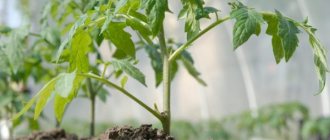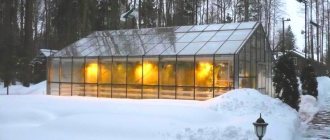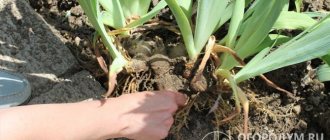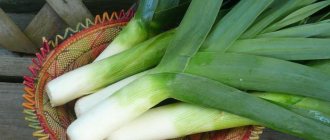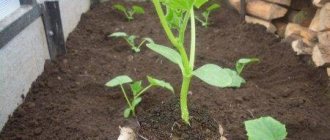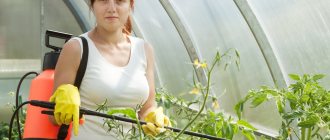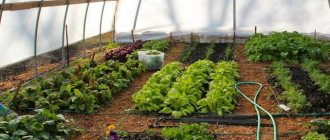Very Strong / Flowers in greenhouses
Various types of flowers are grown in greenhouses, but most often bulbous plants are grown in greenhouses. These can be tulips, dahlias, roses, daffodils. Also popular are hyacinths, daisies, and nasturtiums. Lilies and crocuses bloom well in greenhouses. All these flowers in greenhouses begin to bloom much earlier than under normal conditions; their flowering period also increases with the right approach. In addition, it is in greenhouse conditions that you can achieve flowering of your favorite plant variety at the right time.
Growing flowers in greenhouses can serve two purposes:
- For pot breeding.
- For cutting and subsequent sale.
Most often, as mentioned above, bulbous plants are chosen for growing in a greenhouse, since their development period from dormancy to forcing is shorter than that of others.
Features of floriculture
The flower business has always been and remains one of the most reliable types of income. Beautiful flowering plants are in constant demand - birthdays, weddings, such important dates as Knowledge Day or Teacher's Day, and simply the desire to demonstrate your concern for the woman you love provide flower gardeners with regular customers. Moreover, there is a demand for flowers both in winter and in summer, and they are especially actively purchased during significant holidays, such as International Women’s Day, Victory Day and many others.
The flower business is considered one of the most reliable
But first, we will begin to study a business plan for creating your own flower business and study the features of this industry.
- Remember that the demand for flowers is highly dependent on seasonality. Above, we have already discussed the main dates when demand is maximum and there is an opportunity to make good money. However, during the rest of the year, flowers will not be sold in such large volumes.
- Also be prepared for the fact that in the summer the price of the product will have to be reduced - competition at this time of year increases greatly, the products are supplied to the market by those gardeners who grow flowers only in the summer. That is why it is best to immediately plan to grow plants in a greenhouse in winter.
- Flowers are plants that need constant care. You will need basic knowledge about floriculture, and you will have to pay a lot of attention to caring for plants. Any wrong action, lack of watering, overwatering or overheating can lead to massive death of plants, and at the same time losses, sometimes quite large. That is why you must be an expert in floriculture, or, alternatively, you can hire a specialist in this field.
The demand for flowers depends greatly on seasonality
Prices for flower seeds
seeds flowers
Greenhouse in landscape design
Shelter for plants can be designed according to your own taste. To decorate the space near it, a variety of available means are boldly used:
- old wicker baskets;
- unnecessary furniture;
- used garden tools.
Inside (or outside) almost any thing you can find a place to plant flowers. Don’t be afraid to use clay pots, wooden cabinets, leaky buckets and old wheelbarrows - create your own unique flower bed near the greenhouse.
This entire “entourage” can be painted, supplemented with twine, figurines, lanterns and lamps. Nicely designed paths nearby can provide a striking frame for the greenhouse. Some gardeners use mobile structures in boxes: you can change them in places, place them linearly or on ledges. They have racks attached to which string or wire for plants is pulled. You can create original compositions from these flowers around the greenhouse.
Documentation
To run a flower business, you need to take care of having the necessary permits. You can become an individual entrepreneur or cheat a little and take advantage of the advantages of being the owner of a private household plot (LPH). What's the trick? It’s simple: if you have a plot of land, and local authorities have documented that you are the owner of that same private household plot, you can avoid unnecessary expenses (including paying taxes, submitting an income tax return, etc.). Also, you don’t have to keep strict accounting records.
On a note! Although private household plots are very convenient financially, they also have a downside. You will not be able to sell flowers yourself, but only through resellers. In some cases this may not be economically viable.
An individual entrepreneur, although forced to pay taxes and closely monitor accounting, is still free to set prices and sell his products. To become a businessman, you need to go through certain stages.
Step 1. Register as an individual entrepreneur (state registration procedure).
Certificate of state registration of an individual as an individual entrepreneur
Documents for registration of individual entrepreneurs
Step 2. Select OKVED code. In our case, this is the one called “Ornamental Gardening” and subsection A – “Growing Flowers”.
Selecting OKVED code
To register an individual entrepreneur, fill out an application form P21001. When filling out sheet “A”, information about the types of economic activities is entered
Decoding codes
Step 3. As a taxation system, you must choose the Unified Agricultural Tax (USAT). His rate is 6% of all profits.
Unified Agricultural Tax (Unified Agricultural Tax) - replacement of payment of corporate income tax, VAT (except for the tax payable in accordance with the Tax Code and Labor Code of the Russian Federation) and corporate property tax and insurance contributions
Conditions for the transition to Unified Agricultural Tax
Step 4. Purchase everything you need to start a flower cultivation business.
After registration, you need to purchase everything you need to run your business.
Equipping a greenhouse with a heating system
If you use a greenhouse made of polycarbonate to grow flowers, you don’t have to heat it, since it retains heat well if installed correctly. Most often, amateur gardeners grow: roses, tulips, carnations, and daffodils. Chrysanthemum, peony, aster and hyacinth are rarer inhabitants of greenhouses, although home greenhouses can sometimes boast of them.
A greenhouse for growing flowers is usually quite spacious, since about 25 medium-sized flowers (daffodils, hyacinths, tulips) can be planted on one square meter, and hundreds of small daisies can be placed in this area.
Non-attic greenhouses should be equipped with floor waterproofing and automatic watering, because this will be very necessary for flowers to grow and bloom.
What should a greenhouse be like?
Perhaps the main aspect of success in the flower business is the right greenhouse. The success of the entire enterprise largely depends on where and how crops are grown.
Construction of a greenhouse for growing flowers for sale
The type of greenhouse that you should equip on your site directly depends on the amount of money available and your plans - someone wants to be content with a modest greenhouse and a small income, while others dream of a real flower farm. At first, we recommend investing minimally and expanding over time to avoid large risks.
Flowers in a greenhouse
On a note! If you have a regular greenhouse on your property in which you can grow flowers, then you can try to start a business with it, gradually expanding it.
Since the flower business in the future will still involve growing crops not only in summer, but also in winter, it would be advisable to build a thermos greenhouse on the site. Its advantage is that it allows you to save a huge amount of electricity needed to heat the room in winter.
Greenhouse thermos (example)
What is a thermos greenhouse? The optimal size for this structure is 5 * 20 m, and on the south side it should be about 2.5 m high (on the north side it is made lower by 0.5-0.8 m). The structure is installed on a strip foundation 70 cm deep. A thermos greenhouse cannot be mounted on bare soil, since in winter the soil and beds with plants will freeze. It is advisable to make the frame of the greenhouse from metal, and it should be covered with cellular polycarbonate (in two layers so that it is as warm as possible). A pitched roof is required to improve the possibility of the structure being heated by the sun. As for the location of the greenhouse, it should be on a flat area, stretching from east to west.
Example of a timber frame diagram for a recessed greenhouse
The thermos greenhouse must necessarily have a heating system - without it you will not be able to grow flowers in the winter. This can be either water heating with an electric boiler or a solar collector made of timber and black film.
Don’t forget about additional lighting, which will provide the flowers with the necessary amount of light in winter. The structure must also have a good and well-thought-out ventilation system.
How to build a thermos greenhouse (part 1)
How to build a thermos greenhouse (part 2)
Perhaps one of the most important elements of a greenhouse for flowers is the correct soil. But here everything will depend on what varieties of plants you will grow.
The soil in the greenhouse also plays an important role
Advice! To reduce costs at the very beginning of business development, use turf soil taken from forest edges.
Preparing such soil for use is simple: pour an 8-centimeter layer of soil, cover it with an opaque material, warm it in the sun and then spill it with water, again covering it with a film, but this time transparent. After these operations, the soil will “burn out” well, heating up to 60 degrees - all pathogens, weeds, and insects will die in it. The soil must “burn” for at least 3 months.
If you plan to immediately expand your business on a grand scale, then you will need industrial greenhouse complexes. These are huge structures, in which the width of one span is at least 8 m. Heating here is equipped with the help of internal boiler rooms, and watering is carried out using an automatic drip irrigation system. This is an extremely expensive option and is not suitable for a novice gardener-businessman. Only those who already have some experience in this area should think about purchasing such greenhouse complexes.
Growing tulips in an industrial greenhouse
Types of modern greenhouses
Currently, flower greenhouses exist in several versions:
| Polyethylene construction. | It's easy to do it yourself. To do this, you need to make a wooden or metal frame of a hemispherical or rectangular shape and cover it with plastic film on top. |
| Greenhouse made of polycarbonate. | Most often it is intended for growing flowers on an industrial scale. |
| Greenhouse. | It is a large indoor structure designed for simultaneous cultivation of several types of plants. In addition to beds for growing seedlings, greenhouses also have comfortable paths and an equipped seating area. |
Advice. In addition, the principle of growing flowers in peat greenhouses is increasingly being used. They consist of peat soil placed in a polyethylene bag, which is equipped with holes for planting seedlings. The advantage of this method is the presence in the soil of all the mineral substances necessary for the plant, as well as the ability of the soil to retain moisture for a long time.
Choosing flowers to grow
To reduce costs and be sure of making a profit, you must clearly decide what flowers you will grow. You shouldn’t get excited and rush headlong into cultivating many varieties at once - stick to a maximum of 8-10 species. The fact is that each variety of flowers requires certain care and growing conditions, and these factors do not always coincide for other plants.
Advice! To grow flowers for sale in one greenhouse, select several varieties with similar cultivation conditions and care requirements.
Seasonality in the cut flower market, %
Also, do not forget to take into account the demand - at one time they buy chrysanthemums with pleasure, and at another time roses are popular.
Growing roses
Table. Types and varieties of flowers for growing in a greenhouse.
| Name | Characteristic |
| Chrysanthemum | Chrysanthemum loves soil with the addition of sand and humus. Can be grown at any time of the year. It is best to plant cuttings in the morning or evening at a distance of at least 30 cm from each other. In winter, the crop needs additional lighting, and the air temperature in the greenhouse should be at least +18 degrees. When the first buds appear, the temperature is reduced to +10 degrees. Chrysanthemums grow for about 4 months from the moment the cuttings are planted. |
| Narcissus | These beauties are highly prized for their vibrant color and beautiful flower shape. Planted in the fall before the first frost. The crop is excellent for growing after harvesting vegetables. It is important to properly prepare the bulbs for planting - they must be cooled beforehand. Daffodils are planted to a depth of 15 cm, and the air temperature in the greenhouse should be about +9 degrees. |
| Rose | The queen of flowers who never goes out of style. Grown by grafting or layering. Can be grown for many years in one place. We will tell you more about cultivating the queen of flowers below. |
| Tulip | Symbol of March 8. It is grown from bulbs that must be large and healthy. Otherwise, the flowers will be frail. Before planting in the ground, add some ash and mineral fertilizers to it. To keep up with the harvest for International Women's Day, the bulbs are planted in a greenhouse in December, warming it up to +2 degrees (the bulbs are stored in the basement until this time). Around the end of January, the air temperature in the greenhouse is gradually raised to +8, then to +15-22 degrees. After emergence, do not forget about additional lighting for 6 hours daily. |
| Peony | Unpretentious and beautiful. Loves manure and small amounts of mineral fertilizers in the soil. Caring for them is very simple: loosening, watering and weeding are all the necessary activities. These flowers are selling very well. |
Irrigation and heating system
How to install an irrigation and heating system
Moisture is critical in flower propagation. The best option for maintaining the required level of humidity is an automatic watering system.
Advice. It is also recommended to equip the greenhouse with fans, and the floor should have reliable waterproofing.
So:
- In most cases, a greenhouse is used for year-round flower cultivation. Therefore, it is necessary to provide space heating, in particular, the installation of a steam or water system.
- It is also permissible to use electrical appliances, such as air heaters. The best option is to install an automatic system that controls the humidity level and temperature in the greenhouse.
If flower seedlings are grown in a greenhouse, which are later used to form a flower bed in the garden or a Japanese rock garden, then you can do without heating.
Growing roses
Rose is a flower that is always in greatest demand. It can be of different colors, sizes, both adults and children love it, it is given to teachers and lovers. In addition, it can immediately provide large profits. That is why roses are so often grown by flower growers and businessmen. How to cultivate a rose in a greenhouse?
Growing roses in a greenhouse
Step 1. Prepare the soil for crops. Add humus to the soil (20 kg will be enough), superphosphate (about 30 g) and ammonium sulfate (30 g), peat (no more than 10 kg) per 1 m 2. Also, the soil can consist of mullein, peat, turf and (1:5:4:) and be approximately 80 cm thick. Such a mixture should be kept in a pile for about a year and only then used. Before planting flowers, add a little meat and bone meal (1 kg per 1 m2) and mineral fertilizers to this soil.
Soil preparation
Attention! Before planting seedlings, do not forget to warm the soil to +12 degrees.
Step 2. Most likely, you ordered the seedlings by mail. This means they should be prepared for planting. Since the plants lost a lot of moisture during transportation, first immerse them in water for 24 hours. If the plants have been stored for a long time and were waiting in the wings, then you can immediately drop them in, leaving the grafting site exposed to the air - do not forget to properly moisten them and spray them with a product containing copper to avoid diseases. If the roses arrived to you in peat, then water them a little and immediately plant them in the ground.
Rose seedlings
Step 3. Plant roses in the greenhouse according to the following pattern: 30*30 or 40*25, so that there are no more than 12 units per 1 m2. Plant as written above: the root system is in the ground, the grafting site is in the air.
Planting a seedling
Attention! The rose should not sit too deep/high. In either case, the plant will die. It is important to choose the correct planting depth for the bush.
Planting scheme
Step 4: Give the seedlings a good watering with a hose.
Watering with a hose
Step 5. Now carefully monitor the air temperature - it should not be higher than 10 degrees before forcing, otherwise the bushes will grow unevenly. In general, the optimal air temperature for roses is about 22 degrees, and the soil temperature is at least 12.
Monitor the temperature carefully
Step 6. Don't forget about humidifying the air. Spray the flowers daily to keep this figure at 70%.
Spraying roses
Step 7: Provide proper lighting. It should be bright and uniform for 16 hours. In winter, make sure you have additional light. In summer, lightly shade the bushes.
Lighting should be bright and uniform
On a note! Self-rooted roses are ideal for early forcing; they can produce at least 100 flowers per 1 m2.
Step 8. To cut a rose, drive out one shoot, remove the remaining buds and side shoots, leaving a short part (about 3 buds). Soon they will give new shoots. And if the flowers are being prepared for sale, then pinch them above the 3rd leaf so that the shoot becomes woody and allows buds to form in the leaf axils. New stems will appear, and after a while you will have new flowering bushes in the greenhouse.
How to properly care for roses in a greenhouse
On a note! Roses can be propagated by layering. To do this, bury the shoots deflected to the sides into grooves up to 8 cm deep, strengthening them there with pegs.
Reproduction of roses by layering
Growing eggplants in a polycarbonate greenhouse
In this article you will find everything you need to know about growing eggplants in a polycarbonate greenhouse! We also recommend reading the article about why tomatoes crack when ripe.
Prices for rose seedlings
rose seedlings
What to plant along the greenhouse
Around the shelters for plants, decorative shrubs with long flowering periods look very elegant: single spirea, rose bushes, low-growing hydrangeas, etc. They serve as an effective fence for buildings, while at the same time separating them from the rest of the territory. You can place stands (or pyramids) of climbing roses or clematis here. Flowers along greenhouses always attract attention, drawing attention to themselves.
Important! It is not recommended to plant ornamental shrubs too close to the greenhouse! Not all vegetable crops grow in the shade in a greenhouse.
Group plantings of proud, tall lilies look unusually elegant. They harmonize perfectly with horizontal junipers or miniature conifers placed nearby. Some landowners set up a real flower garden near the greenhouse, planting crops in tiers. Low flowers and perennials appear in the foreground, behind them (closer to the buildings) large plants rise in the background.
Sales of goods
To make a profit from growing flowers, you need to sell your product.
This can be done in several ways:
- open your own flower shop;
- conclude an agreement with resellers;
- negotiate with the owners of flower pavilions;
- sell on spontaneous markets;
- make bouquets at home and sell them via the Internet.
Don't forget about the simple truth: advertising is the engine of trade. Therefore, do not spare money on this part of business development. Analyze the most effective advertising methods in your city and use them.
One of the main conditions for running a successful flower business is advertising.
How to grow flowers hydroponically
Growing plants not in the ground, but in a special substrate, which is systematically irrigated with a solution that supports their vital functions, is associated with hydroponics. The special substrate can be expanded clay or mineral wool. It is possible to use other options, for example, fine gravel, coconut fiber, polypropylene threads, any inert chemical fiber and other materials.
Many gardeners consider using hydroponics more profitable than planting flowers in soil. In this case, the substrate is partially immersed in a nutrient solution that nourishes the plants. The solution is quite economical, so it lasts for a long time.
Many types of flowers are grown in this way, but it is advisable not to use such conditions for adult plants that are accustomed to life in the ground. But young flowers that have just hatched from seeds will happily germinate, strengthen and bloom in hydroponics.
A short list of required investment items
Starting a flower business from scratch is not the cheapest solution. This will require quite a large investment at first.
Initial investment
Annual expenses
To make it easier to navigate your calculations, we suggest that you familiarize yourself with the list of required expense items.
These include:
- purchase and installation of a thermos greenhouse;
- purchase and delivery of soil;
- acquisition of ventilation, lighting, heating systems;
- purchase of planting material;
- payment for electricity and water supply services;
- advertising;
- organization of supplies;
- labor costs;
- possible risks (damage to the greenhouse, death of plants, etc.).
Be sure to draw up a business plan
Note that, according to experts, the profitability of the flower growing business is 70%. The first profit will appear in 6-7 months, and it will take about a month to bring the idea to life. Interestingly, growing flowers will fully pay off in about 8-9 months. So if you have such an opportunity, you can safely take a risk and open your own business growing and selling flowers.
Income calculation
Selection of planting material
Flowers in a greenhouse require a special microclimate for full development (their own values of temperature, humidity, carbon dioxide content) or to obtain out-of-season harvests. Plants should be purchased from agricultural nurseries that professionally grow and select many plants. There you can get acquainted with the planting material on site and be confident in its high quality.
But if there is no good agro-nursery nearby or the plant species you need are not available, ordering online will help. Although then the opportunity to evaluate the quality of the product will appear only after its delivery.
Depending on the purpose of cultivation, the following are mainly cultivated in greenhouses:
- flowers for cutting and for sale in pots - roses, tulips, hyacinths, lilies;
- seedlings grown for sale - violets, petunia, nasturtium;
- plants for decorating a greenhouse - long-flowering and exotic.
Roses grown in greenhouse conditions
